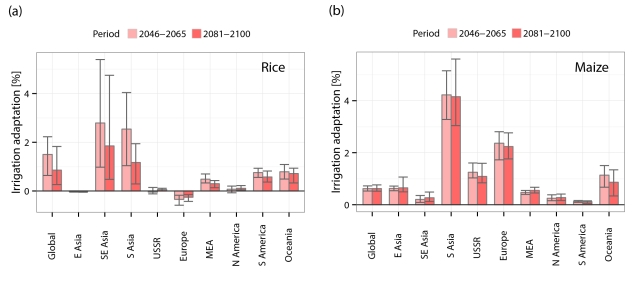Information of Paper
Authors:Masashi Okada, Toshichika Iizumi, Takaaki Sakamoto, Mizuki Kotoku, Gen Sakurai, Yasuaki Hijioka, and Motoki Nishimori
Year:2018
Journal:Earth’s Future, 6
Link to the paper
Keywords
Adaptation, Agricultural system, Climate change, Irrigation, Crop model, Hydrologic model
Abstract
Replacing rainfed cropping systems with irrigated systems has been deemed an effective agricultural adaptation measure in response to climate change. However, few agricultural impact assessments have considered changes in the water availability because of climate change and water use competition among crops. Here we assessed future global crop production under a changing climate and expanded surface water irrigation using the large-scale crop-river coupled model CROVER. The future irrigated area was estimated by extrapolating from the historical linear trends. We present three interesting cases from this global analysis. The results under a high-emission scenario (Representative Concentration Pathway 8.5) showed that, in response to irrigation expansion, maize production in Europe will increase, whereas rice production in East Asia will not increase because of competitive water use between rice and other crops (Fig. 1). Furthermore, we found that future precipitation over crop-producing areas in the Indus River watershed will decrease but that increased precipitation in the higher mountainous areas of the watershed will compensate for these diminished water resources, thereby reducing drought damage. Our findings reveal that competitive water use among crops and the geographical patterns of future changes in precipitation influence the benefits of expanding irrigation for crop production under a changing climate.





